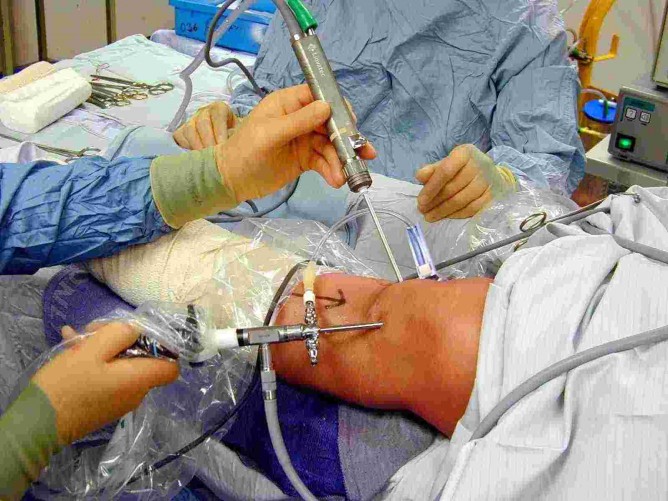According to a recent Finnish study (Finnish Degenerative Meniscal Lesion Study (FIDELITY), patients who underwent arthroscopic partial meniscectomy — knee surgery — had the same recovery and satisfaction levels as those who underwent a placebo surgery. The results of the study have been published in the New England Journal of Medicine. Based on these results, the treatment of patients with knee injuries should hinge on exercise and rehabilitation instead of surgery:
Dec. 27 (UPI) — Patients who underwent a placebo surgery experienced the same incidence of symptoms and fared just as well as patients who actually underwent knee surgery, suggesting that the latter failed to help patients.
The Finnish Degenerative Meniscal Lesion Study (FIDELITY), conducted at the University of Helsinki studied 146 participants who underwent arthroscopic partial meniscectomy, commonly known as knee surgery. The participants aged between 35 and 65 had symptoms of degenerative wear-and-tear of the meniscus, a cartilage that acts as a shock absorber between the shinbone and thighbone.Patients were randomly chosen to undergo arthroscopic partial meniscectomy or a placebo surgery. The placebo surgery just simulated the actual surgery to give the patients an impression that they had had the real surgery. A year after the surgery, the patients were asked how their knee felt, the symptoms experienced and their satisfaction with the treatment.
In both groups patients were satisfied with their surgery and felt their knee was better after the surgery. Of the patients who underwent arthroscopic partial meniscectomy, 93 percent said they would choose the same treatment, while 96 percent of the placebo group felt the same.
“Based on these results, we should question the current line of treatment according to which patients with knee pain attributed to a degenerative meniscus tear are treated with partial removal of the meniscus, as it seems clear that instead of surgery, the treatment of such patients should hinge on exercise and rehabilitation,” said Teppo Järvinen from the University of Helsinki.
The procedure is one of the most common surgeries performed in Western countries after cataract surgeries, with nearly one million of them done in the U.S.
“By ceasing the procedures which have proven ineffective, we would avoid performing 10,000 useless surgeries every year in Finland alone”, said co-author Raine Sihvonen. “The corresponding figure for US is at least 500,000 surgeries.”

















